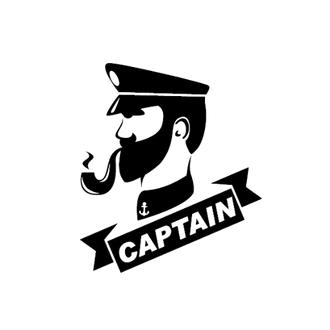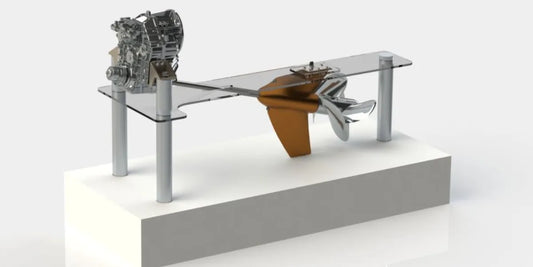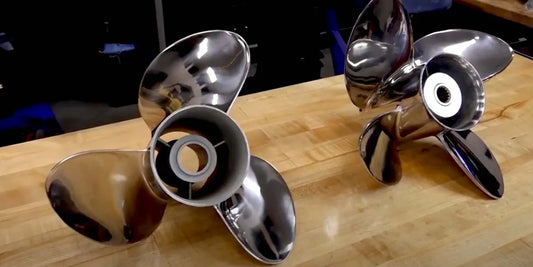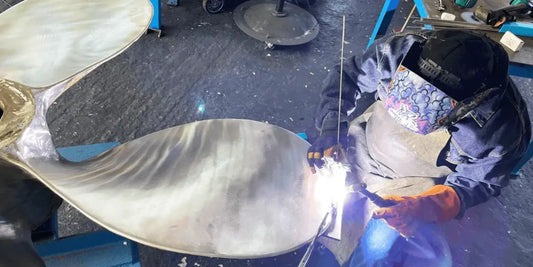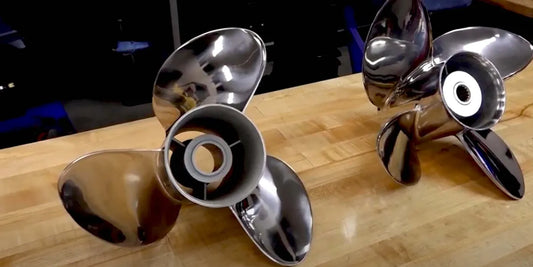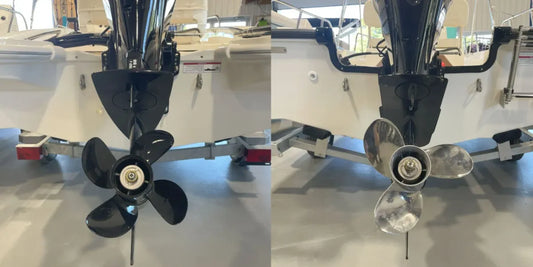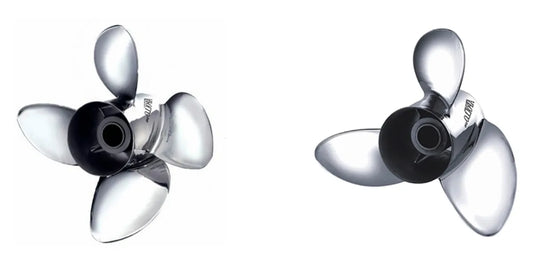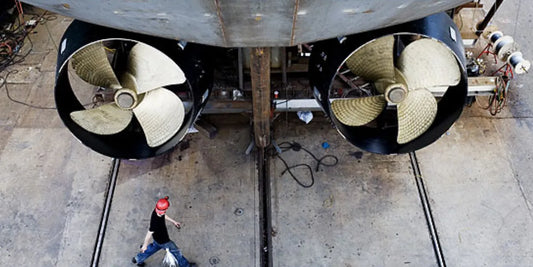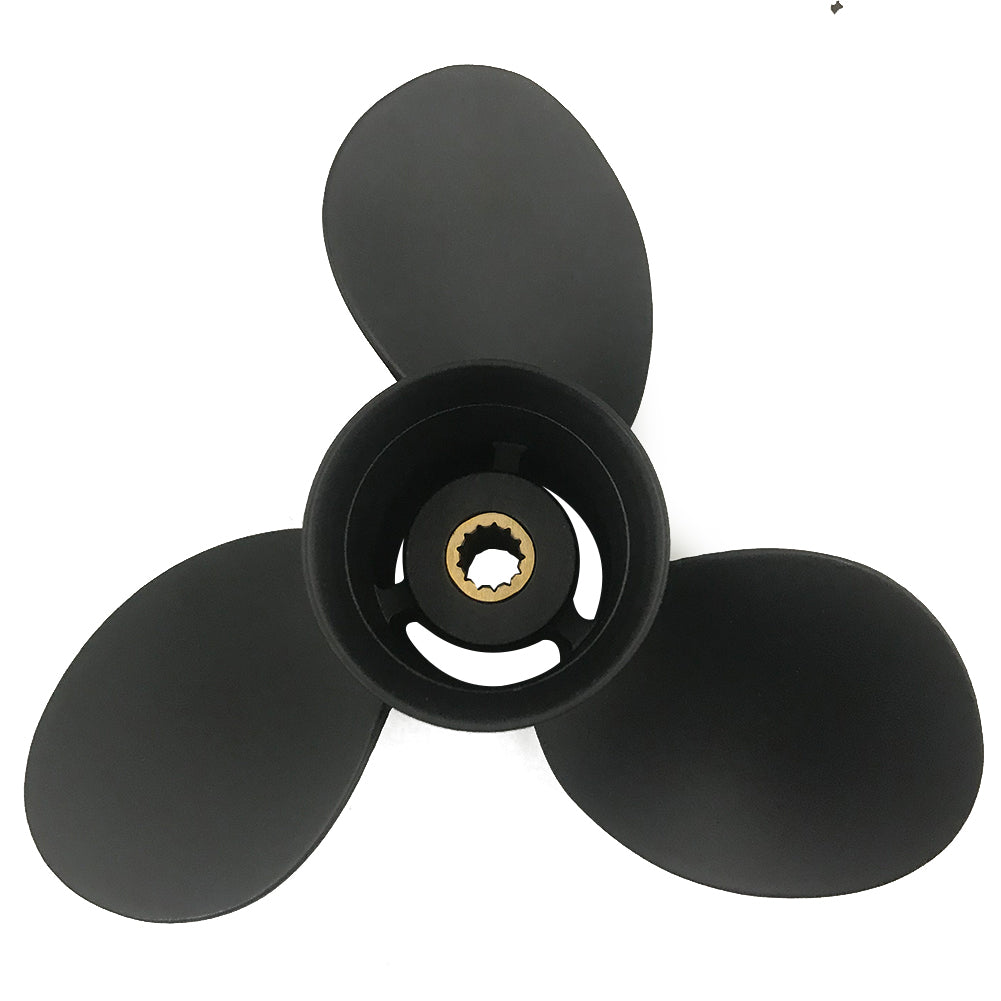Picking the right propeller to fine-tune the performance of a boat is an important decision about which many would argue. One of the most frequently discussed decisions is the choice between a 3-blade and a 4-blade propeller. Both views have their advantages; however, the big question is which one will deliver maximum efficiency for your needs? This guide will examine the primary differences between 3-blade and 4-blade propellers and their impact on speed, fuel efficiency, handling, and overall performance. Whether you are an experienced boater building upon existing setups or a beginner making your first purchase, this article will equip you with the knowledge to make a decision that fits your craft and intentions.
Understanding Propeller Basics

What is a Propeller?
The propeller constitutes a mechanical device used in the act of thrust generation for any manner of vehicular transport, such as boats and aircraft. It is equipped with blades that rotate around a central hub, pushing air or water backward, and forward motion is formed from Newton's third law: every action is met with an equal and opposite reaction.
The propellers come in various designs, materials, and blade configurations, which affect their characteristics, including speed, efficiency, and maneuverability. For example, boat propellers are typically made from stainless steel or aluminum for their strength and resistance to corrosion. Factors such as the number of blades and the shape do change the flow of water around the propeller, affecting acceleration, fuel consumption, and handling, which makes it essential to make a keen choice in terms of the right propeller for optimal performance.
Types of Propellers: 3-Blade Vs 4-Blade
Understanding their characteristics will aid in optimizing performance according to the needs of the boat when choosing between 3-blade and 4-blade propellers. 3-blade propellers are more popular when maximum speeds and efficiency are considered. Drag is reduced with fewer blades, so these propellers typically offer better fuel efficiency and acceleration. Therefore, 3-blade propellers are best suited to give speed to boats that need it, for example, in racing or performance powerboats.
Conversely, they offer better control and stability at slow speeds, thanks to their 4-blade propeller. The extra blade added surface area to remain consistent while working in rough water or under heavy loading conditions. Use these propellers when towing water sports gear, offshore fishing, or when you require a craft that handles better at slower cruising speeds. Furthermore, 4-blade propellers tend to exhibit better fuel efficiency at mid-range RPMs and produce less vibration, resulting in a smoother ride.
Considering the use of the boat, the desired speed, and the manner of its usage, one can select a propeller type that best suits their needs. Armed with this knowledge, a boater can then make an informed choice that will help in performance and efficiency.
Important Terminology in Propeller Design
Specific terminology in propeller design must be understood thoroughly to make informed decisions when choosing or upgrading a propeller. The following are some of the terms explained for your clear understanding:
Pitch: Pitch is the distance that the propeller would theoretically move forward during one complete revolution in the absence of any slip in the water. Propellers having a high pitch are used for cruising at high speed, whereas low-pitch propellers provide more acceleration and pulling power.
Diameter: This is the full width of the circle made when the blades revolve. Large diameters typically accompany slow and heavy work, while smaller diameters are more commonly used in high-speed work.
Blade Count: The quantities of blades on a prop affect performance. The greater the number of blades, the smoother the operation and better the handling of the load; fewer blades would usually offer the best performance at high RPMs in terms of speed and efficiency.
Rake Angle: The rake angle indicates the degree of tilt of the blades for the propeller hub. A high rake angle helps generate more lift at the stern, making it advantageous in rough conditions or in keeping the boat on plane more effectively.
Cupping: Cupping is a slight bending of the trailing edge of the propeller blade. It offers more grip on the water, helps increase fuel efficiency, and can prevent cavitation from occurring at higher speeds.
Hub: The hub is the central portion of the propeller connecting the blades to the engine shaft. Depending on the type of material used, such as rubber or solid, the design of the hub can affect its longevity and noise cancellation.
Slip: Slip is the difference between the specified theoretical distance that a propeller should pass through the water and the distance it covers. Low slip percentages imply good performance.
Since these terms are crucial in your context, you must learn them to assess propeller performance parameters separately and make informed decisions according to your needs. An advanced understanding of parameters such as pitch angle and rake angle will enable the customization of the propeller for improved speed and fuel efficiency in varying water conditions.
Performance Analysis: 3-Blade vs 4-Blade Propellers

Speed and Acceleration Comparison
When the two categories of a 3-blade and a 4-blade type are compared, certain performance factors weigh in. The 3-blade propeller is heavily favored for higher top-end speeds due to its lower drag and lighter weight, enabling the engine to operate at increased power RPMs. It thrives in speed activities, such as water skiing and racing, which involve a broad spectrum of activities where acceleration and maximum velocity are required.
On the other hand, 4-blade propellers deliver the best acceleration and thrust at lower speeds. Furthermore, the extra blade surface area provides the best grip on the water, thereby increasing stability in rough or choppy conditions. Such conditions suggest that 4-blade propellers perform better in scenarios where delicate handling is required, such as fishing and towing heavy loads. Point-wise, running a 4-blade prop in situations that require conscious fuel usage is slightly better for fuel economy, owing to smoother power delivery and a mid-range performance curve that is optimized.
Generally, the primary factor determining your choice between a 3-blade propeller and a 4-blade propeller is your specific purpose. For instance, if top speed is your chosen virtue, then the 3-blade would be your best bet. But in terms of utility, stability, and acceleration, a 4-blade propeller reigns supreme.
Handling and Maneuverability Differences
The distinction between a 3-blade and a 4-blade prop would be much more apparent in terms of handling and maneuverability. A 3-blade propeller would generally offer lighter handling at high speeds and, therefore, tends to be more favored by boaters oriented toward agility and top-end performance. The smaller blade surface area also translates to decreased drag, resulting in easier steering responsiveness and quicker turning.
In contrast, 4-blade propellers excel in control-and-precision-demanding conditions, especially at mid-range and heavy loads. With a larger blade surface area and better-balanced power delivery, 4-blade configurations handle waves with less vibration and tighter turns without excessive cavitation. Better stability during docking or narrow-space navigation is a plus for bigger vessels and activities such as water sports, in particular.
When finally selecting a propeller, prioritize speed versus control according to your typical conditions and vessel type. Any wise operator will understand what concessions to face in the sole pursuit of a propeller that will offer tailored performance according to the needs on demand.
Efficiency in Varying Water Conditions
Efficiency in varying water conditions heavily depends on the design, material, and pitch of the propellers. For example, under calm-water conditions, when speed is preferred, a higher-pitch propeller is employed which travels a great distance with one complete revolution of the blades; under such highs and lows conditions or heavier currents, on the other hand, those conditions prefer a lower-pitch propeller which in return maintains a complete control of the situation and does not allow the engine to be strained. They serve a good function when made of stainless steel containing a small amount of aluminum. They perform well under various water conditions, especially when debris or underwater obstacles are present.
Test data generally suggest that twin-blade designs perform better in shallow or weedy areas by offering noticeably lower drag and higher clearance. In contrast, multi-blade designs tend to complement thrust in open ocean environments or during tow-heavy occasions, such as water sports. The state-of-the-art variable pitch propeller system generates innovative solutions that automatically adjust to changing water conditions, thereby increasing efficiency without requiring human input. When these factors are considered optimally, they will ensure that fuel economy and optimal performance are achieved, regardless of the environmental challenges that present themselves, making adaptability the key to success.
Advantages of 3-Blade Propellers

Weight and Size Perspectives
The weights and sizes of 3-blade propellers have a significant impact on performance and fuel efficiency, favoring different types of vessels. These propellers, in general, were lighter and smaller than the 4-blade ones, thus reducing the rotational inertia and contributing to faster acceleration as well as smoother handling. To mitigate compatibility issues, being relatively minor in size will be beneficial. With these propellers, it is possible to be compatible with most engines and hull designs, which are primarily of interest to recreational boats and small to medium-sized crafts. Research has shown that a lighter structure results in reduced fuel consumption, especially for vessels traveling at medium speeds or carrying lighter loads. By striking the correct balance between robustness and sophisticated design, 3-blade propellers will provide an optimized experience for those who prioritize efficiency and adaptability in various operational settings.
Fuel Efficiency and Cost-Effectiveness
The factor of fuel efficiency is paramount in almost all marine operations, especially for boat owners and operators who aim to minimize costs without compromising performance. Research indicates that a 3-blade propeller, with its more streamlined shape and reduced drag, can reduce fuel consumption. This is particularly true for moderate-speed vessels, where the propeller can apply a uniform level of thrust while wasting less energy. Furthermore, lighter propellers that exert less strain on engines enable the engine to have a prolonged life, which eventually translates into lower maintenance costs in the long run.
The cost-benefit aspect is further boosted by the availability of materials required to manufacture 3-blade propellers. Through the application of new developments in aerodynamics and metallurgy, manufacturers can produce designs that ensure durability and light weight at a competitive price, benefiting all fleet sizes and applications. Thus, the advantages of fuel savings and operational cost reduction go hand in hand to create sustainable and cost-efficient maritime solutions with 3-blade propellers.
Best Applications for 3-Blade Propellers
3-blade propellers are aptly configured for many circumstances; thus, the term 'versatile' is one descriptor for them. The design of the 3-blade propeller helps maximize speed and fuel consumption in pleasure crafts, such as speedboats and recreational yachts. Likewise, from the perspective of thrust and power consumption, they are often used in commercial vessels such as fishing boats and ferries, which are of small or medium size.
The blades of these propellers are also excellent in satisfying the special needs of craft that operate either in a shallow draft or one that requires fine maneuverability. For instance, three-blade configurations allow better control and lessen cavitation, thereby making them best suited for harbor tugs or riverine transport services. Due to its lightweight yet robust structure, it considerably reduces wear and tear, as well as maintenance costs in the long run, thereby lowering the overall costs of its application.
Due to CFD modelling and material advancements, 3-blade propellers now perform efficiently across a wide range of loads and have extended their application to hybrid-powered craft that are working to meet sustainability objectives. This very flexibility constitutes a feature of modern maritime innovation in the recreational, commercial, and green spheres.
Advantages of 4-Blade Propellers

Increased Thrust and Lift
Sometimes, 4-blade propellers provide more thrust and lift, making them the preferred propellers when a vessel demands increased propulsion. The greater blade area means that more thrust can be produced as these blades take a more effective "grip" of the water, sometimes resulting in quicker acceleration. In such situations, propellers become a good choice, especially for larger vessels or when vessels maneuver through adverse conditions, such as strong currents or heavy loads.
As the study revealed, 4-bladed propellers are most effective in minimizing cavity formation, which can adversely affect the performance and lifespan of the propeller. Its optimized design allows for smooth operation with reduced vibration, which in turn provides stability and comfort to both commercial and recreational users. Furthermore, developments in hydrodynamic engineering have enabled the 4-bladed propeller to be customized with great accuracy for various ship types, thereby ensuring efficiency and versatility of operation in different marine environments. Finding the perfect balance between speed, stability, and performance, the 4-bladed propeller stands out as one of the most significant achievements in modern-day marine propulsion systems.
Stability and Smooth Operation
When 4-blade propellers are the ideal choice, stability and smooth operation are just a few of the advantages. Due to their balanced configuration, there is a more even distribution of thrust compared to 3-blade propellers. Through this, vibrations are mitigated, resulting in enhanced comfort for both the passenger and crew. It becomes an excellent advantage for vessels requiring reliability, such as ferries, luxury yachts, and naval ships, where even the slightest vibration might affect comfort or operational effectiveness. Apart from that, the enhanced balancing from 4-blade propellers also reduces cavitation, leading to less wear and tear on the blades and thus amplifying their lifetime.
Besides their practical ones, stability-related characteristics of 4-blade propellers lead to enhanced fuel efficiency. Essentially, less power is wasted overcoming whatever drag or instability exists; therefore, fuel consumption is optimized, operational costs decrease, and the environment benefits. From a marine engineer's point of view, the propellers permit several adjustments by the special requirements placed on the vessel, including variations in load situations or speed fluctuations. Their ability to perform consistently under very adverse sea conditions makes them the reliable choice in virtually every branch of the marine business, from commercial cargo ships to recreational cruisers.
Ideal Uses for 4-Blade Propellers
In my opinion, a 4-blade propeller is an excellent option for maritime applications that require a trade-off between power and efficiency. It is used explicitly on vessels where handling efficiency and steady running qualities under heavy loads are of priority. Bigger boats, such as commercial fishing vessels or passenger ferries, become significant beneficiaries of the improved propulsion efficiency and smoother operation delivered by 4-blade designs. They reduce vibrations and increase thrust; hence, performance and comfort become essential in an operation.
Furthermore, I have found that 4-blade propellers perform well when constant velocity is required, especially in rough water conditions. Such propellers are primarily used on recreational boats, such as yachts and cruisers, where reliability and fuel efficiency must go hand in hand. More favorable in low-speed maneuvering, it makes docking and working in tight spaces easier, something I have always appreciated while navigating heavy marina environments. Overall, 4-blade propellers provide a flexible solution that fits the varied requirements of industries and individual operators.
Choosing the Right Propeller for Your Boat

Factors to Consider When Selecting a Prop
Selecting the correct propeller requires consideration of several factors, all of which directly affect performance, efficiency, and reliability. Here are the primary considerations:
Material Composition: The propeller's materials are one of the most critical factors, with aluminum and stainless steel as the most common options. Aluminum props are lightweight, less expensive, and suitable for most general boating applications, while stainless steel props offer enhanced strength, durability, and precise design for high-performance uses.
Propeller Pitch: The propeller pitch is the distance that a prop is expected to travel in a run through one revolution of the prop shaft. The pitch of the prop compensates for speed and acceleration. At lower pitches, a propeller will generate more thrust and acceleration, making it ideal for maneuvering and towing.
Blade Design and Count: About the blade. Speed versus handling is directly influenced by the number of blades and their particular design. Three blades are considered the standard number, which ensures that speed and smooth operation are balanced among the propellers. Four-blade propellers offer more at low speeds, enhancing handling and fuel economy. The blade profile also determines drag and wake displacement—the factors that need to be optimized for performance.
Diameter Specifications: The diameter of a prop is the distance between the two tips of the opposite blades along the beam, and it is also the size of the circular sweep of the blades. The diameter of a prop would determine the amount of thrust generated and its load capacity. Those with small diameters are better suited for faster cruising, while those with larger diameters excel in handling and performance when heavy loads or rough conditions are present.
Engine Compatibility: Propellers should match the power and specifications offered by the engine. An engine overloaded with a propeller that is not matched to it will result in poor fuel consumption, and the engine itself may overheat or experience reduced performance in extreme cases. Always cross-check the recommended ranges provided by the manufacturer to achieve the best results.
Boating Application: The kind of work undertaken by your boat will determine the type of propeller it needs. To elaborate, water sports require a great deal of torque and acceleration, whereas long-distance cruising emphasizes efficiency and fuel economy. To perform well, a prop needs to be suited to your particular set of circumstances.
Weather and Water Conditions: Environmental factors, such as waves, currents, and water depths, may impact the effective functioning of the propeller. A well-suited propeller will work smoothly under adverse weather conditions and enhance the vessel's ability to maneuver without compromising her sanctity.
If the normally expected changes in speed, heavily influenced by factors such as the power available, were to be analyzed based on the acting forces, you could eventually fine-tune the changes in speed with your requirements and enhance your craft's performance, hence complaining of an inefficient and unenjoyable experience.
Testing Propeller Performance
Testing the propeller's performance begins with how my boat behaves at specified speeds and under specific loads. Special consideration is given to acceleration, fuel economy, and handling. For example, I observe how quickly she can get flat on her plane and whether she remains comfortable while cruising. Which RPMs do I keep close monitoring of? Ideally, one should be able to lead his propeller, with his chosen RPM range recommended by the engine, without struggles, dents, or over-revving.
The next step is analyzing fuel consumption during operational phases. I observe fuel consumption over a set distance or over a set time while maintaining a given speed. This information helps define whether existing propellers suit fuel efficiency or could benefit from some adjustments. Next, I take the vessel out in various conditions, such as with the currents or during sharper turns, to check for adequate control and responsiveness based on the propeller.
Lastly, I would inspect the propellers for any undesired dings, mostly bends, or cracks that could hamper performance. Similar to the inefficiencies during testing, I also compare with the manufacturer's specifications or may reach out to a marine expert for resizing or selecting a different pitch if needed. All this contributes to making the boat's performance excellent, ensuring a reliable and enjoyable experience on the water.
Recommendations Based on Boat Type
In the opinion of those studying propellers and their effects on boat performance, the secret lies in selecting the right propeller, the choice of which depends significantly on the boat type and its intended use. For smaller boats, such as fishing boats or pontoons, I would primarily opt for a propeller that operates at low speeds, with thrust and fuel efficiency in mind. A propeller with a lower pitch can provide these boats with more power to handle heavy loads, while also allowing for the creation of space for maneuvering into tight spots, maintaining a workboat profile, and an easy-going cruise.
High-speed craft propellers are designed for acceleration and speed. A wake boat might benefit from a high-pitch propeller that provides for swift planing and top speed. The choice of material also matters. Stainless steel is the tough choice, suitable for the rigors of it all, and it gives the best performance at higher RPMs. Four- or five-blade propellers in advanced design can provide excellent performance and tight turn control for water sports towing.
For leisure sailboats or larger motor yachts, the centers of attention are propellers designed for efficiency and smooth operation at relatively slow speeds. Foldable and feathering propellers work very well in that regard; they present less drag while sailing, thus letting the boat glide effortlessly along with the water. Therefore, in this category, whereas performance still matters, fuel or energy consumption takes a slight priority. The parameters of the propeller selected for a particular boat type must consider the boat's size, weight, engine power, and typical usage, ensuring optimal performance tailored to that vessel.
Reference Sources
-
MI Wheel - 3 Blade vs. 4 Blade Propeller
Explains the differences in pitch and performance between 3-blade and 4-blade propellers. -
BoatTest - Which Prop is Better For Your Boat: 4 Blades or 3 Blades?
Discusses efficiency, pitch, and performance comparisons for boating applications. -
Airplane Academy - What's the Difference Between 2, 3, and 4-Bladed Propellers?
Provides insights into power, drag, and applications for different blade counts. -
Hartzell Propeller - Are More Propeller Blades Better?
Covers the impact of blade count on pressure pulses, efficiency, and performance.
Frequently Asked Questions (FAQs)
What are the differences between a 3-blade propeller and a 4-blade propeller?
Essentially, performance and design set these two propellers apart: while a 4-blade propeller generally provides more blade area, the prop area, in turn, helps to promote higher propulsion efficiency and reduce prop slip. At the same time, a 3-blade propeller might find favor at high speed due to comparatively lower drag. In considering a choice, it ultimately comes down to the particular hull design and intended use: that is, whether you prefer improved low-speed operation or better top-end speed.
Does the blade number affect the fuel economy of boats?
Typically, FUELS will be highly affected by the number of boat propeller blades. Generally, at low speeds, a 4-blade propeller provides better fuel mileage due to its high surface area, which allows for a firm grip on the water. On the other hand, when running at high RPMs, a 3-blade prop might be the best choice, as it generates less drag, allowing for a higher top speed. Proper prop selection depends on your cruising RPM and the type of performance you desire.
Does a 4-blade prop offer better acceleration?
Yes, hole shot performance is typically a domain of the 4-blade design. This adds surface area that gives the boat a better grip at low speeds and faster acceleration from a standstill. This is advantageous during water sports or casual towing. Conversely, a 3-blade propeller may excel at higher speeds but might compromise some of the low-end torque that a 4-blade offers.
Can a three-blade prop achieve a higher speed than a four-blade prop?
In certain situations, higher speeds can come from the three-blade propeller: that is, at WOT RPMs. Fewer blades equal less drag, so the boat may accelerate faster and possibly reach higher speeds at the top end. This can also result in less efficiency and poorer low-speed performance compared to a four-blade prop. The best choice is ultimately determined by application and hull design.
And what are the advantages of a 4-blade propeller for cruising, then?
A 4-blade propeller for cruising offers several advantages, including improved fuel economy, smoother handling, and enhanced stability. The large blade area of this propeller enables better cruising operation at speed with reduced slip. The larger the area the blades cover, the better the cruising speeds with minimum slip. This means increased fuel efficiency and good fuel economy during long-distance trips when every ounce of fuel counts. Stability and control become essential bonuses when 4-blade propellers are involved, especially in short and choppy water conditions.
How do I determine which prop would best suit my boat, and whether a 3-blade or 4-blade prop is the most suitable?
The decision on which propeller to choose should take into consideration the hull design, the typical speed desired to run the boat, and all activities that can be confidently pursued with the ship. Different props need to be tried, observing the performance at various RPMs and speeds. Consultation with a prop shop or a prop guy is usually the key to your insight into what will fit your outboard engine best, with consideration to your type of boat. In the end, it all comes down to balancing what is best in performance, speed, and fuel efficiency that suits you.
